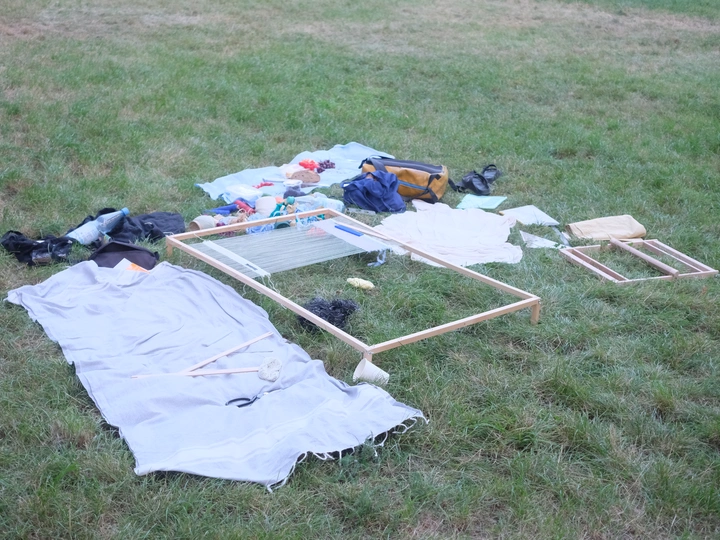How Many Layers Are You Able to Think in/of?

My practice is about to evolve, not yet fully defined. However, I am searching for ways and means between theory and practice with a growing interest in histories, (spatial) (dis)positions and complexities.
I finished my Bachelor in Architecture at the Academy of Fine Arts Vienna in 2020 and completed my Master´s degree at Bauhaus-University Weimar in 2023. During my studies, I completed two Erasmus semesters at the Academy of Fine Arts in Reykjavik and the KU Leuven in Brussels and gained practical experience in various smaller architecture studios in Vienna, Berlin and Munich.
I was part of the student initiative horizonte in Weimar, organising and moderating different lecture series under the topics of Inclusion and Property Issue. In 2021 I was part of the Artist Residency a ghörigs hus organised by Ella Felber and Leah Dorner, exploring notions of cultural heritage and belonging.
Throughout my masters I was a student assistant at the Chair of Theory and History of Modern Architecture and the Chair of Politics of Representation at the Bauhaus-University Weimar. Besides, I was invited to present my master´s thesis at the State Academy of Fine Arts in Stuttgart and the Academy of Fine Arts in Vienna.
Currently I am taking part in the exhibition PERA Peverse at Pera Museum in Istanbul, curated and organised by Prof. Aslı Serbest, Prof. Mona Mahall, and Yelta Köm. While preparing a PhD Exposé at the Bauhaus University Weimar, with the help of Bauhaus-Startstipendium.
The fractured lines of inequality, that run through our histories are based on asymmetrical relations between the One and the Other. Of course, this applies not only to interactions between humans but also with the environment world. (Schulz, 2017) These interactions are built on a series of dichotomies in which this Other is systematically suppressed and exploited while being feminized. (Harding, 2008) The dichotomy is maintained by a Westernized modern epistemology and practices of science and technologies that similarly shape them. However, there are a variety of epistemologies around the globe that need to be regarded equally to not discriminate against a large group of human and non—human beings, while allowing for futures based on greater social and ecological justice. (Harding, 2008)
In my thesis How Many Layers Are You Able to Think in/of? I investigated the craft practice of weaving from feminist new materialist perspectives in search of possible future patterns of skills within design and spatial practices. I did this in the form of five fictional, written conversations between Western modern and feminist new materialist perspectives. In a second step, I translated the aspects found in the conversations that might be interesting for possible future patterns of skills within design and spatial practices into a series of woven samples. In this way, I located my research in practice and the (spatial) context of my personal experiences and desires. These weavings move between appropriation and application and tell stories that are not completed but rather ongoing. The project is about visualizing different perspectives. Put differently, through unravelling the layers or different threads of weaving I created a web of connections between various cultural practices, times, bodies and languages that provide an inside into the complexities and relations of our worlds. Here design and spatial practices were addressed through the notion of skills and practice.